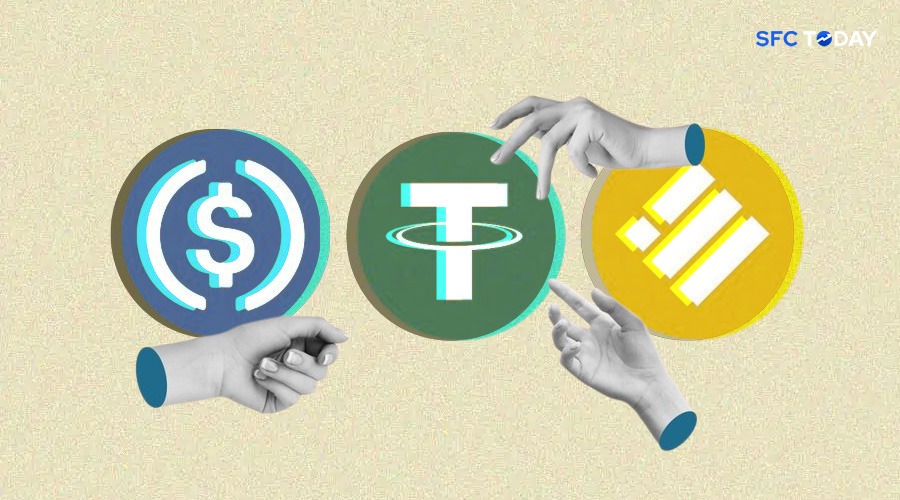Stablecoin Showdown: Comparing USDC and USDT in the Crypto Arena
Stablecoins have become a cornerstone, offering the benefits of digital currencies without the typical volatility associated with assets like Bitcoin and Ethereum. Among the myriad of stablecoins, USD Coin (USDC) and Tether (USDT) stand out as two of the most influential and widely used. This comparative analysis delves deep into their mechanisms, trustworthiness, adoption, and their roles in the broader financial landscape.
Introduction to Stablecoins
Stablecoins are cryptocurrencies designed to maintain a stable value relative to a specific asset, typically a fiat currency such as the US dollar. This stability is achieved through various means, such as holding reserves in the corresponding fiat currency, or via algorithmic mechanisms that automatically adjust supply based on changes in demand.
USD Coin (USDC)
Overview
USD Coin (USDC) is a stablecoin pegged to the US dollar, where every USDC issued is said to be backed by a corresponding US dollar held in reserve. Launched in September 2018, USDC was developed by the Centre consortium, a collaboration between Circle and Coinbase. Its primary aim is to merge the unrestricted nature of cryptocurrencies with the stable value of the US dollar.
Technical Aspects
USDC operates predominantly on the Ethereum blockchain as an ERC-20 token, although it has expanded to other blockchains such as Algorand, Solana, and Stellar. The transparency of USDC is a significant part of its appeal; it undergoes monthly audits by independent accounting firms that verify the matching of USDC tokens to dollars held in reserve.
Use Cases
USDC is widely used in the cryptocurrency market for trading, given its stability, and is also increasingly used in decentralized finance (DeFi) applications. Beyond trading, USDC serves as a digital dollar in various financial transactions like remittances and programmable payments, offering cheaper and faster alternatives compared to traditional banking.
Tether (USDT)
Overview
Tether (USDT) is the oldest and most popular stablecoin, introduced in 2014. It is issued by Tether Limited, part of the Bitfinex trading platform, and has been surrounded by various controversies over the years, particularly regarding the true backing of the issued tokens.
Technical Aspects
USDT was initially launched on the Bitcoin blockchain using the Omni Layer Protocol but has since been issued on multiple blockchains including Ethereum, Tron, and EOS. The multi-chain presence of USDT makes it highly accessible and liquid across different cryptocurrency ecosystems.
Use Cases
The primary use of USDT is in the cryptocurrency market where it is used to hedge against the volatility of other cryptocurrencies and to move funds between exchanges without the need for fiat conversion. USDT’s market capitalization and liquidity have made it a staple in the digital asset world.
Comparative Analysis
Transparency and Trust
Transparency is arguably the most critical factor in the trustworthiness of stablecoins. USDC arguably leads in this aspect, with regular, transparent audits that ensure each USDC is backed by an actual US dollar, enhancing its trustworthiness. In contrast, Tether has been criticized for its lack of transparency and has faced legal issues regarding the backing of its tokens. Only recently has Tether started to improve its transparency practices.
Adoption and Liquidity
While USDC is highly trusted and growing rapidly, USDT still dominates in terms of overall market cap and liquidity. Tether’s first-mover advantage has secured its place as a fundamental asset across all major exchanges, making it more liquid and often preferred for trading and arbitrage operations.
Regulatory Standing
Regulatory scrutiny is a significant aspect of stablecoins. USDC’s backing by established US-based companies such as Circle and Coinbase gives it a semblance of regulatory compliance that is more robust compared to Tether, which has had various legal battles over its operational practices.
Technological Infrastructure
Both USDC and USDT are available on multiple blockchains, reducing the risk of network congestion and high transaction fees. However, the expansion of USDC into other protocols like Stellar and Algorand highlights a strategic move towards enabling faster and cheaper transactions, which might be crucial as the DeFi space grows.
Both USDC and USDT play pivotal roles in the cryptocurrency ecosystem, each with its strengths and weaknesses. USDC offers a more transparent, regulatory-friendly option, which may appeal to more conservative investors and those concerned with compliance and security. On the other hand, USDT’s vast adoption and liquidity make it indispensable for high-volume traders and those operating across multiple exchanges.
The choice between USDC and USDT depends significantly on the user’s priorities—whether they value transparency and regulatory compliance over liquidity and widespread availability. As the market for stablecoins continues to evolve, the landscape could shift, potentially seeing new innovations that could alter their respective standings or even introduce new players to the field.







